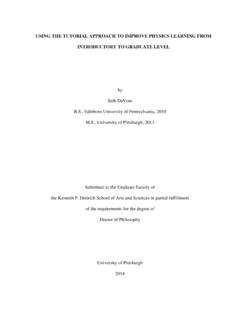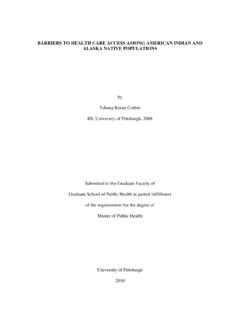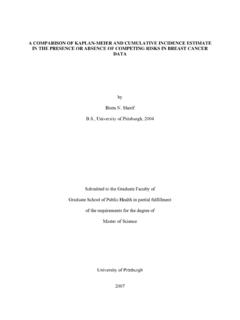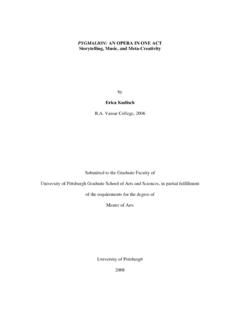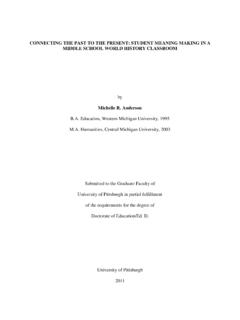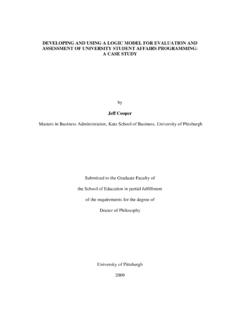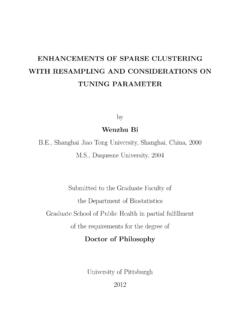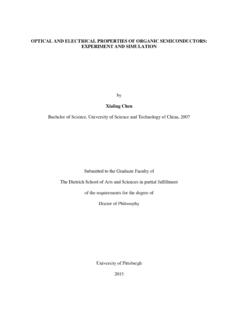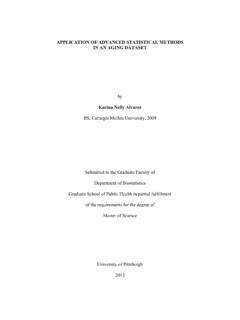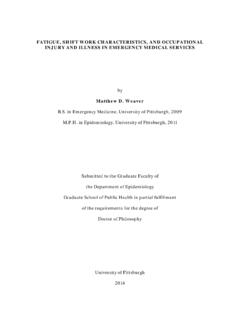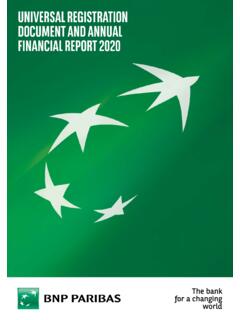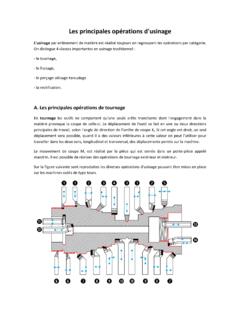Transcription of PEARSON’S VERSUS SPEARMAN’S AND KENDALL’S …
1 PEARSON S VERSUS SPEARMAN S AND KENDALL S CORRELATION COEFFICIENTS FOR CONTINUOUS DATA by Nian Shong Chok BS, Winona State University, 2008 Submitted to the Graduate Faculty of the Graduate School of Public Health in partial fulfillment of the requirements for the degree of Master of Science University of Pittsburgh 2010 ii UNIVERSITY OF PITTSBURGH Graduate School of Public Health This thesis was presented by Nian Shong Chok It was defended on 26 May, 2010 and approved by Thesis Advisor: Andriy Bandos, PhD Research Assistant Professor Department of Biostatistics Graduate School of Public Health University of Pittsburgh Stewart Anderson, PhD Professor Department of Biostatistics Graduate School of Public Health University of Pittsburgh Marike Vuga, PhD Research Assistant Professor Department of Epidemiology Graduate School of Public Health University of Pittsburgh iii Copyright by Nian Shong Chok 2010 iv The association between two variables is often of interest in data analysis and methodological research.
2 Pearson s, Spearman s and Kendall s correlation coefficients are the most commonly used measures of monotone association, with the latter two usually suggested for non-normally distributed data. These three correlation coefficients can be represented as the differently weighted averages of the same concordance indicators. The weighting used in the Pearson s correlation coefficient could be preferable for reflecting monotone association in some types of continuous and not necessarily bivariate normal data. In this work, I investigate the intrinsic ability of Pearson s, Spearman s and Kendall s correlation coefficients to affect the statistical power of tests for monotone association in continuous data.
3 This investigation is important in many fields including Public Health, since it can lead to guidelines that help save health research resources by reducing the number of inconclusive studies and enabling design of powerful studies with smaller sample sizes. The statistical power can be affected by both the structure of the employed correlation coefficient and type of a test statistic. Hence, I standardize the comparison of the intrinsic properties of the correlation coefficients by using a permutation test that is applicable to all of them. In the simulation study, I consider four types of continuous bivariate distributions composed of pairs of normal, log-normal, double exponential and t distributions.
4 These PEARSON S VERSUS SPEARMAN S AND KENDALL S CORRELATION COEFFICIENTS FOR CONTINUOUS DATA Nian Shong Chok, University of Pittsburgh, 2010 v distributions enable modeling the scenarios with different degrees of violation of normality with respect to skewness and kurtosis. As a result of the simulation study, I demonstrate that the Pearson s correlation coefficient could offer a substantial improvement in statistical power even for distributions with moderate skewness or excess kurtosis. Nonetheless, because of its known sensitivity to outliers, Pearson s correlation leads to a less powerful statistical test for distributions with extreme skewness or excess of kurtosis (where the datasets with outliers are more likely).
5 In conclusion, the results of my investigation indicate that the Pearson s correlation coefficient could have significant advantages for continuous non-normal data which does not have obvious outliers. Thus, the shape of the distribution should not be a sole reason for not using the Pearson product moment correlation coefficient. vi table OF CONTENTS ACKNOWLEDGEMENT .. X INTRODUCTION .. 1 PEARSON PRODUCT MOMENT CORRELATION COEFFICIENT .. 4 SPEARMAN S RANK-ORDER CORRELATION 5 KENDALL S TAU CORRELATION COEFFICIENT .. 5 MOTIVATION .. 6 SAMPLING DISTRIBUTIONS .. 10 APPROACH .. 15 PERMUTATION TEST .. 15 DISTRIBUTIONS USED IN THE SIMULATION STUDY.
6 17 PARAMETERS OF THE SIMULATION STUDY .. 20 RESULTS .. 22 CONCLUSION .. 27 DISCUSSION .. 29 APPENDIX. SAS CODE FOR PERMUTATION TEST AND SIMULATION STUDY .. 31 1. THE GENERATION OF SAMPLING DISTRIBUTIONS .. 31 2. THE GENERATION OF NORMAL DISTRIBUTED DATA .. 31 3. THE GENERATION OF LOG-NORMAL DISTRIBUTED DATA .. 31 vii 4. THE GENERATION OF T DISTRIBUTED DATA .. 31 5. THE GENERATION OF DOUBLE EXPONENTIAL DISTRIBUTED DATA .. 31 BIBLIOGRAPHY .. 42 viii LIST OF TABLES table 1..Frequency of positive estimates of the correlation coefficients 12 table 2. Estimates of the ..true values of different correlation coefficients .. 12 table 3..Summary of distributions used in the simulation study 17 table 4.
7 Rejection rates for the bivariate normal distribution 24 table 5..Rejection rates for the skewed distributions .. 25 table 6. True values of the Pearson s correlation coefficient for log-normal data .. 25 table 7. Rejection rates for the distributions with excess kurtosis .. 26 ix LIST OF FIGURES Figure 1. Histogram for the Pearson product moment correlation coefficients with n= 13 Figure 2. Histogram for Spearman s rank-order correlation coefficients with n= 13 Figure 3. Histogram for Kendall s tau correlation coefficients with n= .. 13 Figure 4. Histogram for the Pearson product moment correlation coefficients with n= 14 Figure 5. Histogram for Spearman s rank-order correlation coefficients with n= 14 Figure 6.
8 Histogram for Kendall s tau correlation coefficients with n= .. 14 x ACKNOWLEDGEMENT I would like to express my sincere gratitude to my thesis and academic advisor, Dr. Bandos, for his encouragement, guidance, patience, time and invaluable input throughout the preparation of this work. I would also like to thank the committee members for their valuable comments and suggestions. I appreciate the feedbacks from all of them. Thank you. Finally, I would like to thank my family and friends for their love, encouragement and support. 1 INTRODUCTION In data analysis, the association of two or more variables is often of interest ( the association between age and blood pressure).
9 Researchers are often interested in whether the variables of interest are related and, if so, how strong the association is. Different measures of association are also frequent topics in methodological research. Measures of association are not inferential statistical tests, instead, they are descriptive statistical measures that demonstrate the strength or degree of relationship between two or more Two variables, X and Y, are said to be associated when the value assumed by one variable affect the distribution of the other variable. X and Y are said to be independent if changes in one variable do not affect the other variable.
10 Typically, the correlation coefficients reflect a monotone association between the variables. Correspondingly, positive correlation is said to occur when there is an increase in the values of Y as the values of X increase. Negative correlation occurs when the values of Y decrease as the values of X increase (or vise versa).7, 15, 19 There are many different types of correlation coefficients that reflect somewhat different aspects of a monotone association and are interpreted differently in statistical analysis. In this work, I focus on three popular indices that are often provided next to each other by standard software packages ( Proc Corr, SAS ), namely the Pearson product moment correlation, Spearman s rank-order correlation and Kendall s tau correlation.
